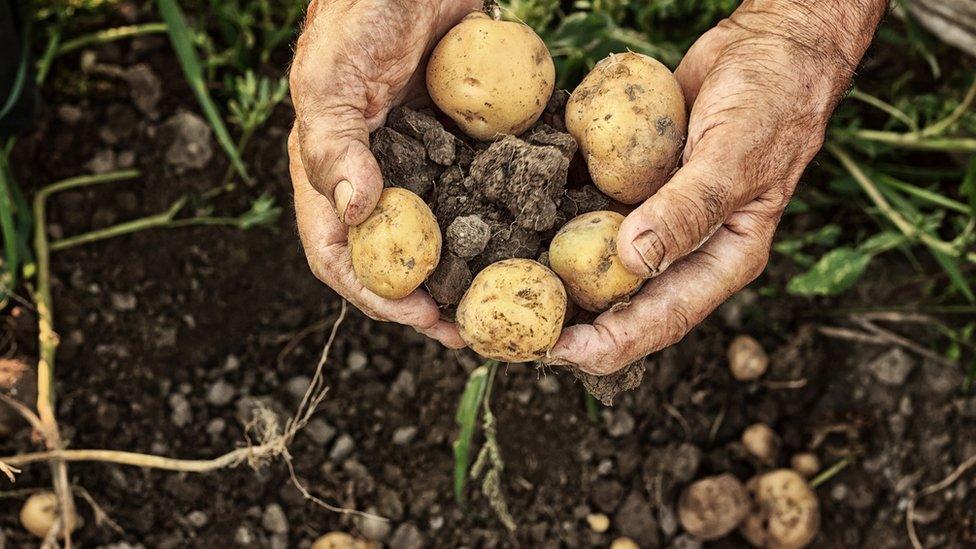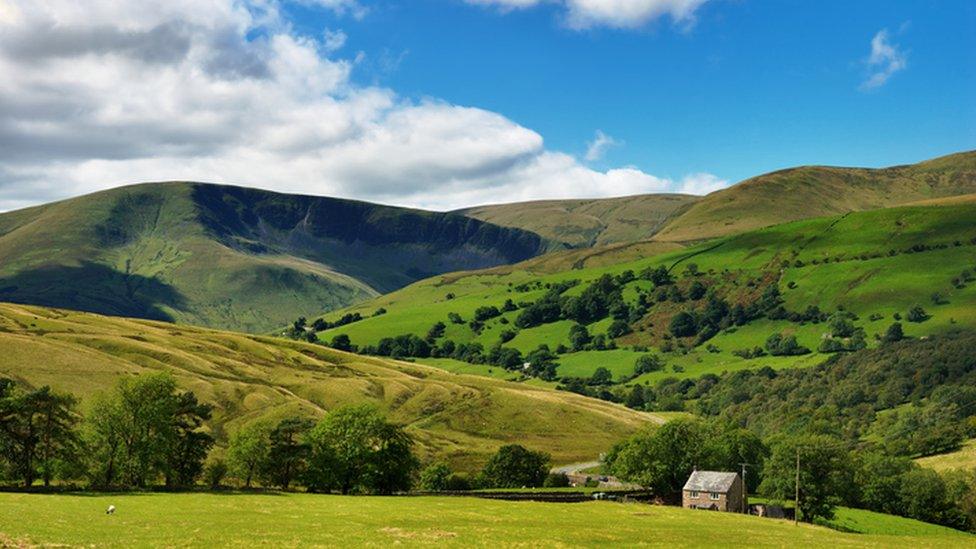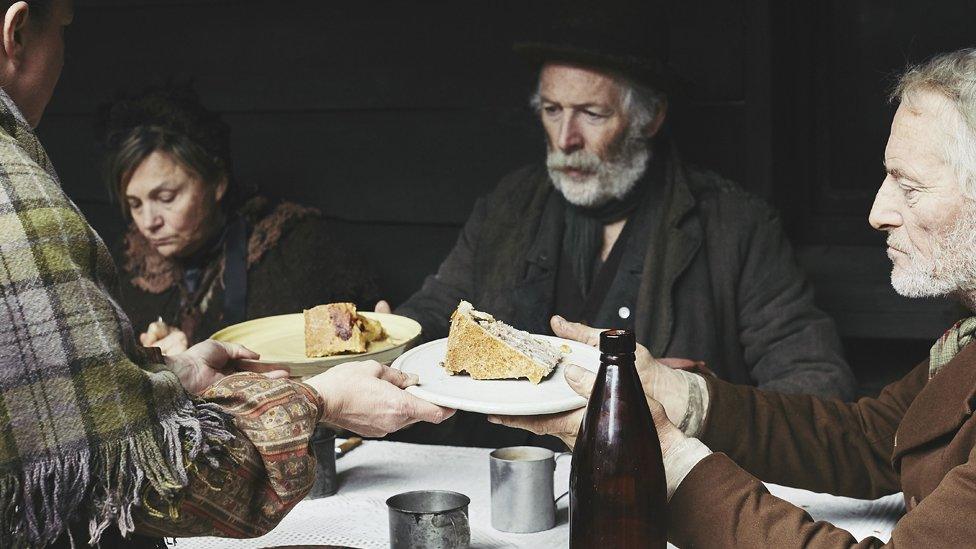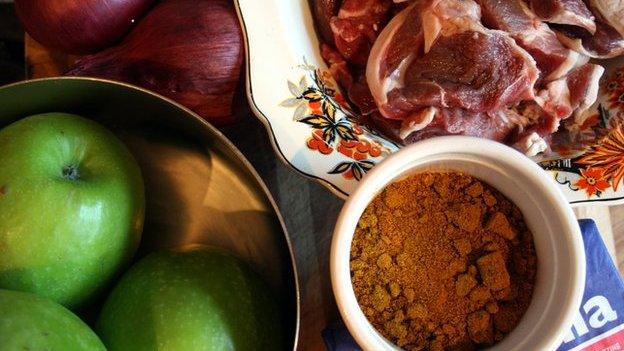Poor rural Victorians 'had best diet'
- Published
- comments

Locally-produced potatoes would have been a staple in Victorian times
Poor, rural societies which ate high-quality foods bought locally had the best diet and health in mid-Victorian Britain, a new report has revealed.
The healthiest regions, measured by low mortality rates, were often the most isolated.
In those areas, people would have consumed plenty of locally-produced potatoes, whole grains, vegetables, fish and milk.
There were also fewer deaths there from pulmonary tuberculosis.
This suggests people had better diets, the researchers writing in JRSM Open, external suggest.
They found the most nutritious diets were enjoyed in isolated, rural areas of England, the mainland and islands of Scotland and the west of Ireland - which was at that time part of the United Kingdom of Great Britain and Ireland.
Dr Peter Greaves, study author from the Leicester Cancer Research Centre, said: "The fact that these better-fed regions of Britain also showed lower mortality rates is entirely consistent with recent studies that have shown a decreased risk of death, following improvement towards a higher Mediterranean dietary standard.
"The rural diet was often better for the poor in more isolated areas because of payment in kind, notably in grain, potatoes, meat, milk or small patches of land to grow vegetables or to keep animals.

Isolated communities in rural England had some of the best diets
"Unfortunately, these societies were in the process of disappearing under the pressure of urbanisation, commercial farming and migration."
Dr Greaves said these changes in Victorian society led to worse diets among poor, rural populations and resulted in locally-produced food becoming less diverse - something that has since occurred across the world.
You may also like:
In the middle of the 19th Century, fewer than half of the near 19 million people in England and Wales were living in large urban centres.
Among the three million population of Scotland, only one million lived in town districts, while fewer than 30% of the 5.5 million population of Ireland was urban.
For many poor people across Britain, white bread made from bolted wheat flour was the staple component of the diet.
When they could afford it, people would supplement this with vegetables, fruit and animal-derived foods such as meat, fish, milk, cheese and eggs - a Mediterranean-style diet.
Poor people living in wealthier farming districts who were usually paid in cash often had great difficulty getting these foods on a regular basis, but in more isolated areas of Britain milk and fish were more accessible.
A good number of country dwellers lived to ripe old ages, the researchers said.
In the poor rural districts of Connaught in the west of Ireland, for example, nearly 20% of people reached the age of 65 or more and some reached the age of 95 or even 100.
- Published16 October 2016

- Published17 January 2015

- Published16 November 2011
